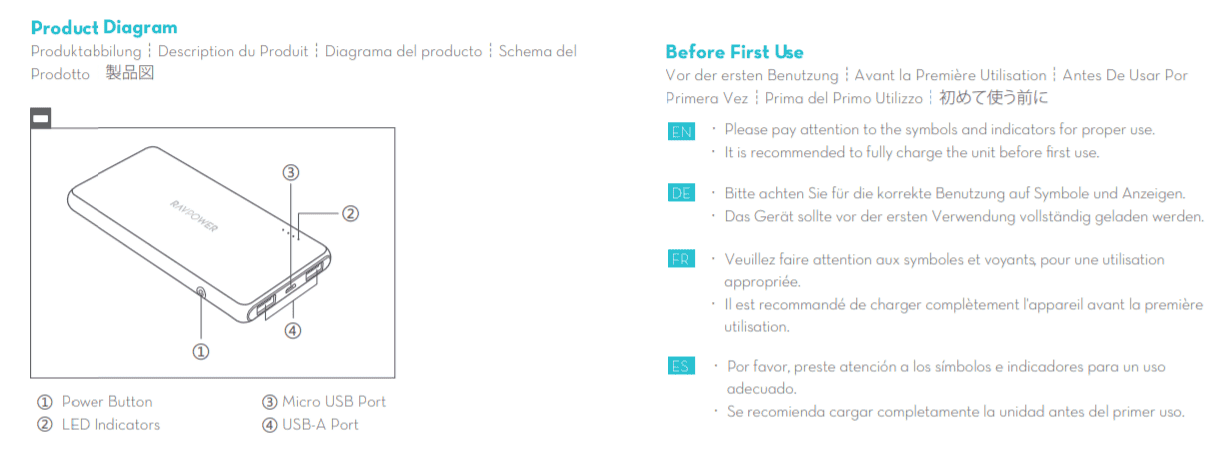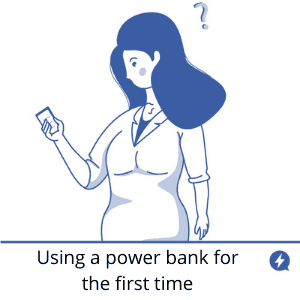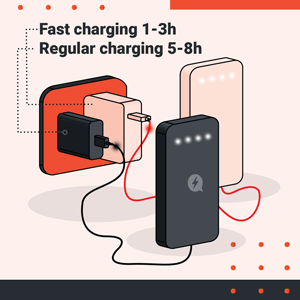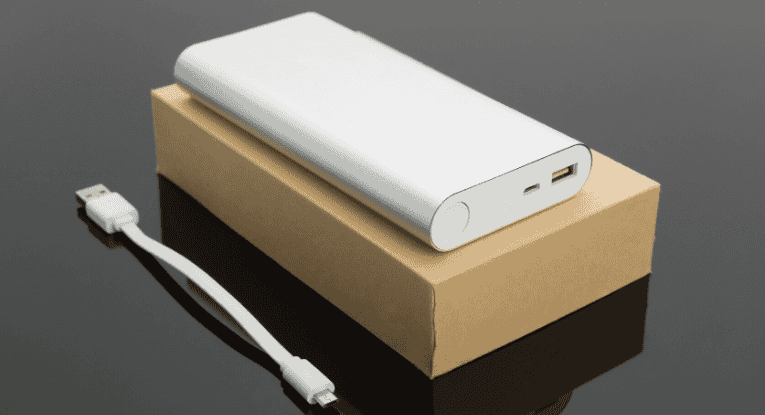Using a power bank for the first time is a pretty straightforward thing. Sometimes you can simply take it out of the box and you’re ready to go. But generally, you should charge the power bank first before using it.
Power banks are quite simple devices so you don’t need to have any advanced setup procedures in order to start using them for the first time. Other types of products might require you to do specific actions such as fully discharging and recharging the electronic device several times before using it. This is not the case with power banks.
Let’s go through some basic considerations you should be aware of when starting to use a new power bank for the first time.
First Things First: Read the User Manual
Before using your new power bank, you should always read the user manual. Although the use of a power bank is simple and straightforward, this doesn’t mean you should ignore the manufacturer’s recommendations.
User manuals are targeted specifically to the device you are using. Even if some of the info you might find in the manual doesn’t overlap with what you’re about to read here, you should follow the manufacturer’s guidelines.
For example, in this user manual, RAVpower recommends fully charging the device before use:

However, on other user manuals for similar power banks, RAVpower does not make the same recommendation. So just be on the safe side, simply follow the instructions that come with your new power bank.
Do Power Banks Come Already Charged?
Yes, most power banks do come pre-charged. However, in most cases, it won’t be a full charge, but something around 75% or less. You’ll almost never buy a new power bank that is completely charged out of the box.
Of course, you could receive a completely empty power bank as well. That’s especially the case with most devices that have been on the shelf for a long period of time before being sold. After a while power banks, just like any other battery, will start losing power until they completely deplete their charge. For more information on this topic, check out our previous article on how long a power bank keeps its charge.
In order to assess the charging level, check how many LED lights are blinking when you press the power button. Most power banks have 4 LED lights that indicate the level of charging. Each of them stands for 25 percent power, on average. So if you see 3 out of 4 lights blinking, then the power bank is charged to around 75%.
However, some portable chargers come with LCD displays that showcase exactly how much charge is left. Power banks with display screens are more accurate in this regard.
How to Charge Your Power Bank For the First Time
As a best practice, you should fully charge the power bank before using it for the first time, even if it has some charge out of the box. Almost any power bank comes with a compatible charging cable that you can either plug into a wall socket or in other power sources such as a laptop’s USB port.

Please note that the majority of power banks do not come with a wall charger. Many people are not aware of this when they place the order and then get disappointed when they see that the package does not contain one. Furthermore, you should know that not all chargers are the same in terms of the power they can supply.
Some of them supply more power and thus can charge a power bank faster, while others are slower and they can add several hours to the charging time of your device.
If you don’t have a charger when you first get the power bank, you can simply charge it using the USB port from your laptop. Just be mindful that in this case, it might take a long time for the power bank to charge as most USB ports from laptops have very low current outputs, although there might be some exceptions too.
How Long Does it Take to Fully Charge Your Power Bank?

When it comes to charge times, there are a few different factors that might influence how long it will take for the power bank to reach that 100% level:
- Power bank capacity: generally speaking, the more capacity a power bank has, the longer it will take for it to charge. So you can expect to reach a full charge much slower for a 72000mAh power bank for example, compared to a 5000mAh power bank. However, the difference between the charging time of these different capacities can be influenced by the next factor:
- Charging technology: if the power bank comes with a USB type C port and fast charging technology such as PD or QC that can sustain 30W+, then it will charge much faster compared to a power bank that has a micro USB charging port and a maximum input power of 18W. Due to this factor, you can find power banks with larger capacities that can charge faster than ones that have two times lower capacity overall.
- Pre-charge level: If you charge your power bank when it’s 20% full, it will obviously take less time than charging it from 0%. Also, it’s generally recommended not to leave a power bank discharge to 0% on a regular basis, as it can affect the battery life in the long run.
In order to know what charging times to expect from a specific power bank, it’s best to check the user manual or manufacturer’s details on the product pages. Generally, the estimated charging time will be listed in hours, the most common being between 3 and 6 hours, depending on the features of each portable charger.
If you’re looking to get a portable charger that can be replenished in a very fast time, then look for one that has a USB type C charging port and one of the following charging technologies: PD, QC, GaN, or graphite. You can also check out our curated list for some suggestions for different power banks that charge fast.
Some Maintenance Tips
After using your power bank for the very first time, there are still some tips you should note if you want to extend its battery life. Maintaining your power bank has a lot to do with following some best practices:
- Avoid letting depleting the battery to 0% on a constant basis. Ideally, charge your power bank before it drops under 10%
- Don’t expose it to very high temperatures (such as leaving it in your car during a hot day)
- Don’t cover the power bank while it’s charging
- If you’re not using it for a long time, make sure to recharge it every 2-3 months
In case your power bank doesn’t work properly, check out our troubleshooting guide for when the lights are blinking but the power bank is not charging.
Conclusion
A power bank is a long-term investment, especially if you travel a lot. It will definitely make your life simpler allowing you to charge your electronic devices on the go. As you can see, using it is quite straightforward and easy. Let us know in the comments if you have any questions that have not been addressed in the article!
